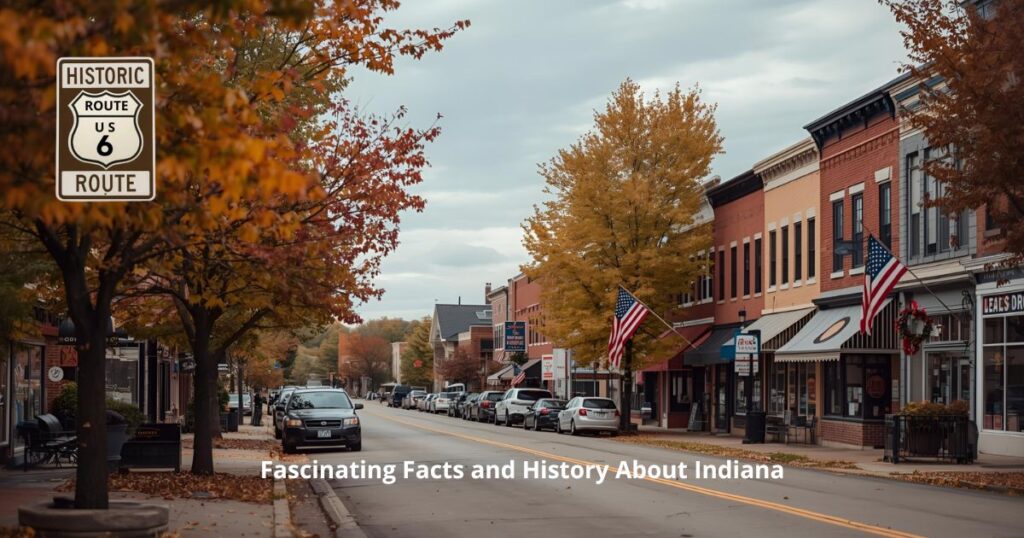This post is crafted for Indiana residents, travelers exploring Historic U.S. Route 6, and history enthusiasts eager to uncover the stories behind the Hoosier State’s charm and legacy.

Key Historical Events:
- 1816 – Statehood: Indiana became the 19th state of the Union, marking the start of its journey from frontier territory to industrial powerhouse.
- The Underground Railroad: Indiana played a vital role in the movement to help enslaved people escape to freedom. Historic sites in towns like Fountain City preserve this legacy.
- The Automobile Boom: By the early 20th century, Indiana was a hub of automotive innovation. Companies like Studebaker and Duesenberg set global standards for craftsmanship.
- The Rise of U.S. Route 6: Known as the “Grand Army of the Republic Highway,” Route 6 brought new travelers, trade, and community connections across northern Indiana.
Unique Cultural Aspects:
- The Hoosier Identity: No one knows exactly where the nickname “Hoosier” originated, but it represents friendliness and neighborly pride—values that define the state’s spirit.
- Music and Arts: Indiana’s musical influence spans from jazz legend Wes Montgomery to pop icon Michael Jackson. Local art scenes in Goshen, Elkhart, and Wabash thrive through festivals and galleries that celebrate creative talent.
- Community Gatherings: From the Indiana State Fair to small-town harvest festivals along Route 6, celebrations of food, farming, and friendship are woven into the state’s culture.
Fun Facts:
- Santa Claus, Indiana, receives thousands of letters every year addressed to the North Pole—and volunteers reply to them all.
- The first professional baseball game was played in Fort Wayne in 1871.
- Indiana is home to more than 10,000 miles of rivers, perfect for kayaking, fishing, and quiet reflection.
- The iconic limestone used in the Empire State Building and the Pentagon came from southern Indiana quarries.